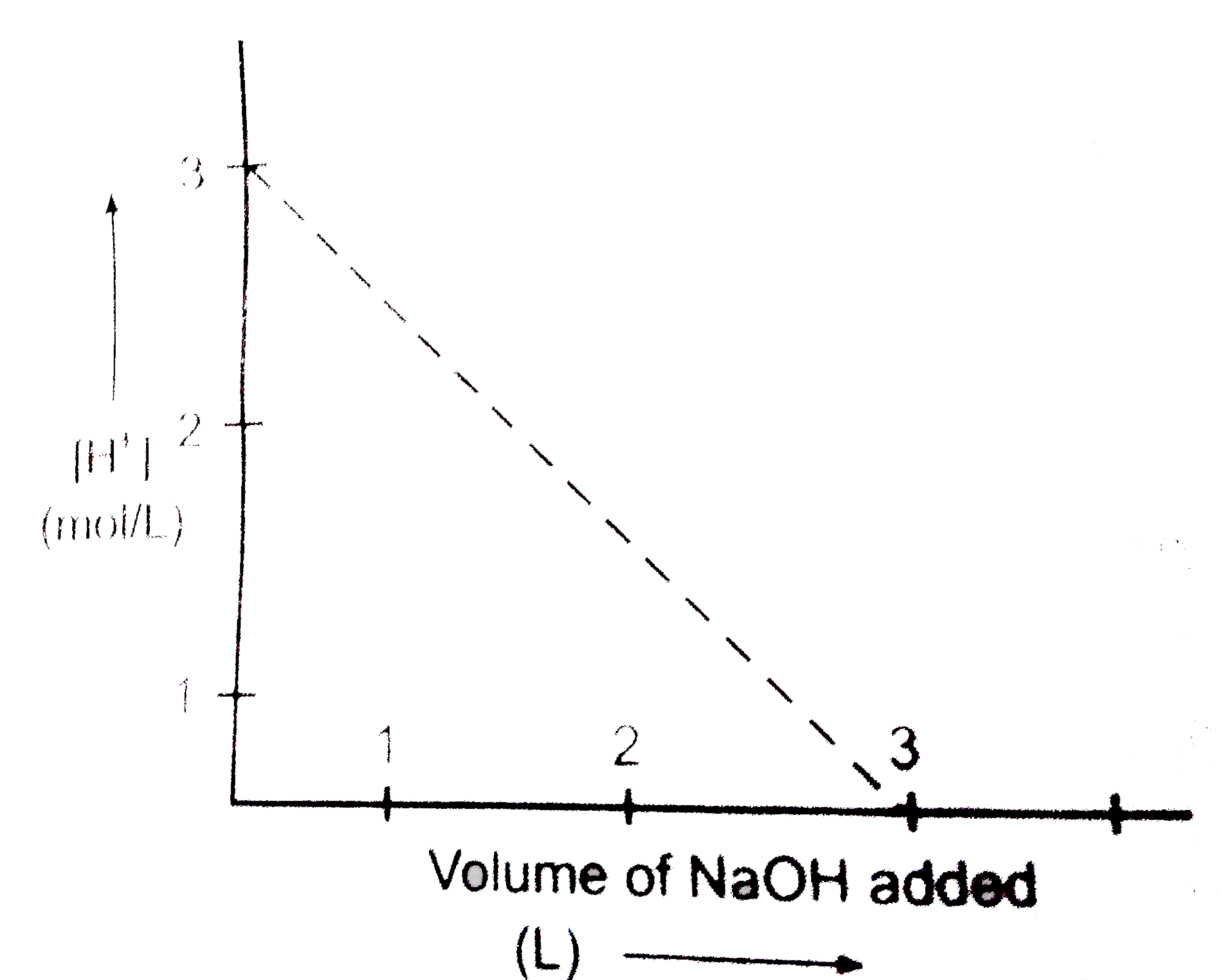Level 2 (Q.1 To Q.30) from NARENDER AVASTHI CHEMISTRY Chapter 8 STOICHIOMETRY for Class 11
| Class 11 | CHEMISTRY |
| Chapter | STOICHIOMETRY |
| NARENDER AVASTHI CHEMISTRY | Level 2 (Q.1 To Q.30) |
| Medium | English |
| Academic Year | 2023-2024 |
Question 6
6.2 g of a sample containing NaHCO3, NaHCO3 and non -volatiale inert impurity on gentle heating loses 5% of its mass due to reaction 2NaHCO3→Na2CO3+H2O+CO2. Residue is dissolved in water and formed 100 mL solution and its 10 mL portion requires 7.5 mL of 0.2 M aqueous solution of BaCl2 for complete precipitation of carbonates.
Determine mass (in gram) of Na2CO3 in the original sample .View SolutionQuestion 7
Nitric acid canbe produced from NH3in three steps process given below
(I)4NH3(g)+5O2(g)→4NO(g)+6H2O(g)
(II)2NO(g)+O2(g)→2NO3(g)
3NO2(g)+H2O(l)→2HNO3(aq)+NO(g)
percent yield of 1st ,2nd and 3rd steps are respectively 50%,60% and 80% respectivley then what volume of NH3(g) at 1 atm and 0∘required to produced1575 g of HNO3 .View SolutionQuestion 10
A 1.0g sample of a pure organic compound cotaining chlorine is fused with Na2O2 to convert chlorine to NaCl. The sample is then dissolved in water, and the chloride precipitated with AgNO3, giving 1.96 g of AgCl. If the molecular mass of organic compound is 147, how many chlorine does each molecule contain ? View SolutionQuestion 13
Urea(H2NCONH2) is manufactured by passing CO2(g) through ammonia solution followed by crystallization. For the above reaction is prepared by combustion of hydrocarbons. If combustion of 236 kg of a saturated hydrocarbon (CnH2n+2) produces as much CO2 as required for production of 999.6 kg urea then molecular formula of hydrocarbon is:View SolutionQuestion 14
11.6 g of an organic compound having formula (CnH2n+2) is burnt in excess of O2(g) initially taken in a 22.41 litre steel vessel. Reaction the gaseous mixture was at 273 K with pressure reading 2 atm. After complete complete combustion and loss of considerable amount of heat, the mixture of product and excess of O2 had a temperature of 546 K and 4.6 atm pressure. The formula of organic compound is :View SolutionQuestion 15
H2O2+2KI40%yield−−−−−→I2+2KOH
H2O2+2KMnO4+3H2SO450%yield−−−−−→K2SO4+2MnSO4+3O2+4H2O
150mL of H2O2 sample was divided into two parts. First part was treated with KI and formed KOH required 200 mL of M/2H2SO4 for neutralisation. Other part was treated with KMnO4 yielding 6.74 litre of O2 at 1 atm. and 273 K. Using % yield indicated find volume strength of H2O2 sample used. View SolutionQuestion 19
A silver coin weighing 11.34 g was dissolved in nitric acid When sodium chloride was added to the solution all the silver (present as AgNO3) precipitated as silver chloride. The mass of the precipitated silver chloride was 14.35 g. Calculate the percentage of silver in the coin. View SolutionQuestion 26
A mixture of FeO and Fe2O3 is completely reacted with 100 mL of 0.25 M acidified KMnO4 solution. The resultant solution was then treated with Zn dust which converted Fe3+ of the solution to Fe2+.The Fe2+ required 1000 mL of 0.10 MK2Cr2O7 solution. Find out the weight % Fe2O3 in the mixture. View SolutionQuestion 27
To a 10mL, 1M aqueous solution of Br2, excess of NaOH is added so that all Br2 is disproportionated to Br− and BrO−3. The resulting solution is free from Br−, by extraction and excess of OH− neutralised by acidifying the solution. The resulting solution is suffcient to react with 2 g of impure CaC2O4(M= 128g/mol) sample. The % purity of oxalate sample is : View SolutionQuestion 28
0.10 g of a sample containing CuCO3 and some inert impurity was dissolved in dilute sulphuric acid and volume made up to 520 mL. This solution was added into 50mL of 0.04 M KI solution where copper precipitates as Cul and I− is oxidized into I−3. A 10 mL portion of this solution is taken for analysis, filtered and made up free I−3 and then treated with excess of acidic permanganate solution. Liberated iodine required 20 mL of 2.5 mM sodium thiosulphate solution to reach the end point.
Determine mass percentage of CuCO3 in the original sample. View SolutionQuestion 30
An impure sample of sodium oxalate (Na2C2O4 weighing 0.20 g is dissolved in aqueous solution of H2SO94) and solution is titrated at 70∘C,requiring 45 mL of 0.02 M KMnO4 solution. The end point is overrun, and back titration in carried out with 10 mL of 0.1 M oxalic acid solution.Find the purity of Na2C2O4 in sample: View Solution
All Exercises from NARENDER AVASTHI CHEMISTRY Class 11 CHEMISTRY STOICHIOMETRY
- Exercise
- Level 1 (Q.1 To Q.30)
- Level 1 (Q.121 To Q.150)
- Level 1 (Q.151 To Q.180)
- Level 1 (Q.181 To Q.200)
- Level 1 (Q.31 To Q.60)
- Level 1 (Q.61 To Q.90)
- Level 1 (Q.91 To Q.120)
- Level 2 (Q.1 To Q.30)
- Level 2 (Q.31 To Q.35)
- Level 3 - Assertion - Reason Type Questions
- Level 3 - Match The Column
- Level 3 - One Or More Answers Are Correct
- Level 3 - Passage
- Level 3 - Subjective Problems
